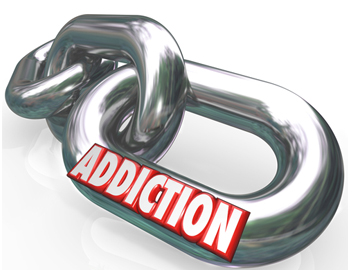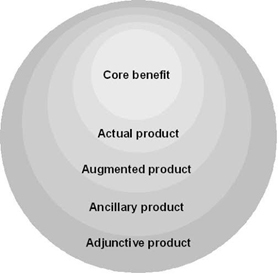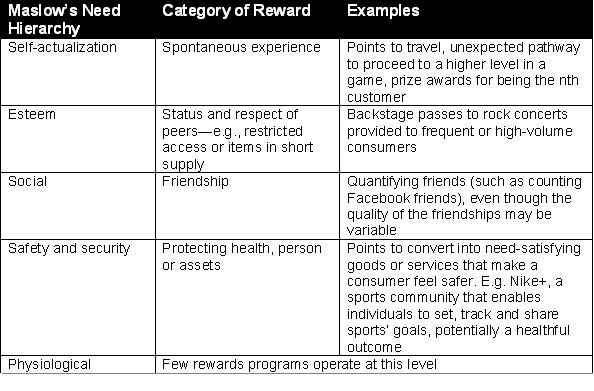
Creating Product Addicts
Corporate attempts to boost customer loyalty, or move customers to go to great lengths to repeat purchase behaviour, can be seen as creating a form of addiction without a pejorative connotation
 Addiction isn’t always negative. The value proposition of products and the manner in which they are sold and used can be so compelling that many consumers willingly repeat the experience again and again, essentially becoming addicted to a brand. People with iPhones, for example, would likely go through intense withdrawal if they were deprived of their Apple devices without notice.
Addiction isn’t always negative. The value proposition of products and the manner in which they are sold and used can be so compelling that many consumers willingly repeat the experience again and again, essentially becoming addicted to a brand. People with iPhones, for example, would likely go through intense withdrawal if they were deprived of their Apple devices without notice.
Image: Shutterstock
Considered this way, corporate attempts to boost customer loyalty, or move customers to go to great lengths to repeat purchase behaviour, can be seen as creating a form of addiction without a pejorative connotation. Product addiction of the positive kind, of course, needs to be created. For many marketers, this requires significant change to how they operate. In Managing the New Customer Relationship: Strategies to Engage the Social Customer and Build Lasting Value, I discuss how companies can go beyond customer satisfaction, and even beyond loyalty, to develop intense bonds between their products and consumers. This article highlights the four main, inter-related areas in which brand addiction can be planned: product, rewards, price and communications.

There are up to five main categories of benefits inherent in any product, both goods and services, which may motivate consumers to buy again. These categories are as follows:
Core benefit: the main benefit customers derive from using the product, being seen with it, or having it available for use in the event of need.
Actual product: tangible and intangible elements the company wraps around the core benefit, like packaging, style, fashion, colour, brand, etc.
Augmented product: additional elements the company, its distribution channel intermediaries or other partners provide together with the product, such as financing, installation, warranty, after-sales support, delivery, etc. The purchase, use and after-sales experience – whether in person, online or in some combination – is part of the augmented product, too.
Ancillary product: elements of meaning or broader context that the company associates with the product such as environmental friendliness, alignment with causes or charities, etc.
Adjunctive product: Additional benefits or rewards not directly related to the product itself that companies attach to a product purchase. Examples include parallel value systems such as loyalty programs that provide points tied to purchases that consumers convert into tangible or virtual rewards.
REWARDS
Historically, marketers have focused on the first three levels (core benefits, actual product and augmented product) to provide consumers with rewarding value propositions. But because differentiation has declined in many marketplaces, especially the more mature ones, focusing on these three categories of product may not lead to the intense consumer involvement and addiction that can apply earlier in industry life-cycles.
Ancillary product provides secondary reasons for product purchase, which is why many companies are now using this approach to differentiate. Examples include RBC’s Blue Water Project, CIBC’s Run for the Cure, Becel’s Ride for Heart and other corporate social responsibility initiatives.
Adjunctive product offers a particularly significant additional potential for marketers to encourage consumer habituation. Loyalty programs are one form of adjunctive product. Here companies establish a value system in parallel to the benefits of their own products to give rewards not directly tied to the product itself. Now the consumer benefits in more than one way – from both the product and rewards. Loyalty programs thus provide more than one reason to consume a product, creating reinforcements that Skinnerian psychologists would call operant conditioning.
There are many forms of parallel value systems that can be considered as adjunctive product. Table 1 (below) lists some examples using Maslow’s Need Hierarchy to facilitate categorization.

Intrinsic rewards are those that integrate or resonate with innate or natural elements of a person’s psyche and cognition. An example of intrinsic rewards may occur when a game player becomes hyper-stimulated as a result of a game speeding up and providing more threats and rewards as the person progresses through different levels. The game player continues the game because he or she derives direct enjoyment from it and sees the game as an end in itself.
When people modify their behaviours to achieve more points, and do this repetitively while rationalizing their behaviours, they may be converting extrinsic rewards into intrinsic ones.
Consumers are now spending more time playing online games and using new media than watching television. As a result, marketers are now focused on how to provide both short-term stimuli and longer-term recognition and rewards. Online loyalty programs let consumers use points for virtual rewards where the rewards are more or less without “real” value. For example, playing virtual games such as MyTown or Farmville allows users to obtain points and use the points within the game. Sometimes the points are awarded for game accomplishments, but points or benefits can often also be bought. The motivation for collecting the points is to improve a player’s score, performance or status within the game, essentially addressing a social need. By providing leader boards so that game players can see their status, games reinforce point-collecting habituation.
Some people may also feel that they derive intrinsic rewards from point-collecting behaviours, such as feeling better after an accomplishment in a virtual arena, which can serve as a possible offset for frustrations in the physical world. In the off-line world, points programs have long used a version of leader boards. For example, the highest mileage travellers on airlines receive higher rewards to recognize their importance to the airline and travellers are provided with luggage tags and other opportunities to communicate their status to other travellers.
PRICE
Marketers know that customers are more likely to buy when they have had an opportunity to experience the product and use it without risk. After all, that is why car companies have test drives and why many stores have “goods satisfactory or money refunded” return policies. Marketers have also long used price to encourage the trial that leads to changed behaviours. Retailers use loss-leaders to attract business to their stores. Manufacturers discount their products periodically to stimulate trial. Goods may even be given away to get consumers to try it out, like sampling consumer non-durables such as soap, razors and breakfast cereals. Trial, these marketers reason, interrupts existing behaviours and creates new ones. If consumers need material incentives to change behaviours, if they need an opportunity to try something out, if they are to start new behaviours, why not give them an opportunity to use the product for nothing? As mentioned earlier, products can be given away, but so can aspects of ancillary product and adjunctive product. Consumers can be given seats at an event the company hosts (ancillary product) or points to use as appreciation of loyalty (adjunctive product). Other examples of adjunctive product include t-shirts and other goods given away with purchases of beer, and recipes with baking powder.
A free price may be an essential component of a firm’s business model. The so-called “freemium” and “pay to play” business models are now widely used by many companies seeking to change consumer behaviour in virtual marketplaces. Here a product or service is given away for the consumer to try. If consumers want enhanced versions or additional features, they pay. This model is commonly used for software applications such as apps from Apple’s App Store, and solutions such as Google Analytics. It is also used in various forms for the sale of cable TV, cellular services and so on, with low initial prices used to attract customers – and change their initial behaviours – with prices escalating as behaviours become entrenched. “Free” is made possible in many industries where fixed costs are proportionately high and variable costs low. The cost of producing an incremental item—the n+1 unit—can be very low in comparison to a firm’s fixed costs, so a company’s profitability may not be damaged by giving away some incremental units. Software, telephone services, airlines, hotels, car rentals, banking services, movies, music and many others have cost structures that are skewed toward high fixed costs with proportionately lower variable costs.
In some cases, where high initial or one-time costs can be regarded as sunk and written off when incurred, there can be even more incentive to give away goods or services to penetrate markets and gain customer share, especially if there is an expectation that customers’ behavioural change will drive improvements in business profitability in the medium term.
Having noted that “free” may create new consumer behaviours and opportunities to habituate, price reductions should be approached with care. For example, a company that cuts prices by just 15 per cent would need to achieve a 60 per cent volume increase for its profits to remain unchanged if its variable costs are 55 per cent of selling prices. In another example, a price decrease of more than 25 per cent will generally result in less profitability unless a firm is able to more than double its sales (specific figures depending on the firm’s cost structure). Of course, for competitive and other reasons, it may not always be possible to achieve this level of sales increase.
While “free” can be addictive for the consumer, there are often related costs. Consumers do not use money directly when they get something for free, but they may pay indirectly in ways that benefit the supplier. Here are 12 examples:
- Attention: Free online viewing or a product or service discount is provided in exchange for watching an online ad, for example.
- Bundling: A consumer receives a price offset or even a free product by buying other products in a bundle.
- Referrals: Companies frequently give away or discount their products or services if consumers attract new customers to the company or endorse their products. This is the basis of the Friends and Family promotions used by a number of retailers and cell phone companies, for example.
- Financing: Financing terms often offset purchase prices. For example, monthly payments may be waived for a few months at the front end of a long-term vehicle lease. A variant of this is the mail-in-rebate (MIR), where companies obtain the consumer’s money now in exchange for information and a rebate later.
- Information: Companies may seek something other than money in exchange for providing a product or service without charge. Information is most commonly sought, e.g., information about the customer, the product or the purchase experience. Starbucks might say, “Tell us how we did today and we’ll give you a coupon for a free coffee.”
- Company money: Like Canadian Tire, some companies create their own money as part of their business model. Some online games also use company cash. On YoVille, a customer would use Yocash to buy a kitty, say; on Farmville, Farm Cash or Facebook Credits are used to buy virtual things as players cultivate their farms, buy animals and harvest crops and trees.
- Points: Points are collected by consumers in exchange for purchasing and these points are then exchanged for goods and services, sometimes when these would otherwise have gone unsold or unused, such as hotel rooms in non-peak periods.
- Product upgrades: Companies often use revenues from premium versions of the product to enable the less well-featured products to be given away. This frequently occurs in the software application sector. Rovio’s well-known Angry Birds game is provided for free, for example, but customers pay if they want a Mighty Eagle or an ad-free version. Apps that take people into virtual worlds often provide the game or experience at low or modest cost but charge for digital enhancements, such as a special digital weapon in an online war game.
- Recycling: Consumers may be encouraged to repurchase by taking back their end-of-life, partially used or recyclable products in trade for discounted new ones.
- Systems, collectibles, samples and comps: Companies subsidize the sale of one product in order to achieve sales of other ones, especially when the product that is given away is part of a system that would benefit from the use of other products. Examples include giving away or discounting razors or ink-jet printers to make money on the blades or cartridges. Another variant of the system is the collectible, where consumer behaviour is triggered by beginning a collection sequence, with early goods given away, discounted or bundled to secure ongoing sales of later ones by the collector. Samples are also a well-known approach to stimulate trial and adoption, and examples are to be found in many consumer goods industries. Complimentary products are also often given away to stimulate trial and change behaviours when the desired relationship is a valuable one and the cost of the product is modest in relation to the value of the relationship.
- Time: Time is an offset where a company gives away or steeply discounts its product or service in order to secure future business, and seeks future sales to offset current sales. Time is also an offset when companies use mail-in rebates to provide future rewards for current purchases. The market pricing of some products is such that the rebate coincides with the projected price of the product, as is the case for some aging technology products that experience substantial price declines when new models are introduced.
- Work: Companies exchange work a consumer does, such as a requirement to log in to a website, for example, for something the consumer is likely to value. Consumers often complete two codes (called “captcha” codes) prior to logging into a secure area of a website. One code is required for security and authentication. The other serves to make text readable where machines have already tried unsuccessfully.
COMMUNICATIONS
There are several ways to habituate consumers. The main approaches focus on aspects of product, rewards and price, but no addiction can be accomplished without effective communications.
Communication strategies used to focus principally on consumer cognition as the primary pathway to changed behaviours. Increasingly, companies are modifying purchasing behaviours by reversing the communications strategy, focusing first on behavioural change and then seeking its repetition so that the new behaviours become integrated in a new consumer consciousness. That is, marketers create stimuli and incentives for consumers to change what they do; when the new behaviours are repeated sufficiently often by consumers and reinforced by companies, consumer cognition eventually changes to incorporate these new behaviours, too. For example, a person might receive an online incentive – like a great deal – to click on a button to buy a pair of shoes. He then finds a way to rationalize that he really did need the shoes he bought. The product arrives, fits surprisingly well and looks good to the buyer. The consumer is more willing to click on that purchase button the next time. After a few such purchases, the consumer’s buying habits have changed. He is buying more online, trusting online sellers and paying more attention to new information sources like recommendation engines on vendors’ web-sites and word of mouth.
As argued in this article, there are four inter-related keys to creating addiction: product, rewards, price and communications. The trick is to first conceive of these elements in new ways, starting with a meaning for product that goes beyond just the main product benefits the customer derives, and then reversing the communications strategy to support repetition of modified purchasing behaviours.
Reprint from Ivey Business Journal
Reprint from Ivey Business Journal
[© Reprinted and used by permission of the Ivey Business School]














